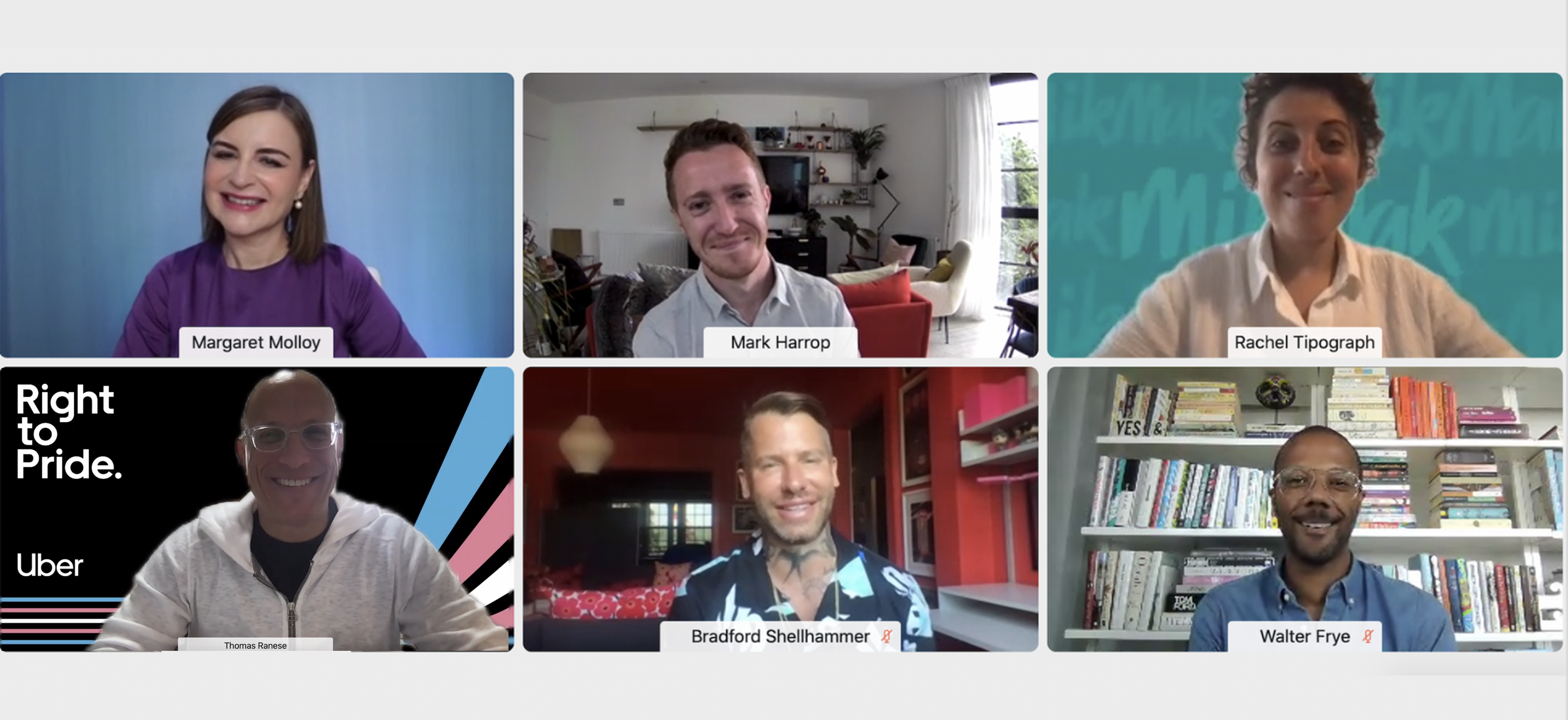On June 29th, I welcomed five LGBTQ+ marketing leaders for the third annual Pride Edition of our Future of Branding roundtable.
During our extensive conversation, we reflected on how brands have been observing Pride month and looked to how brands can craft a more inclusive society; how to walk the line between authenticity and action; and how to meaningfully show up for the LGBTQ+ community throughout the entire year—not just in June.
In closing, I asked our panelists what is the most critical, high-impact thing a brand or an organization can do to support Pride? And what’s your commitment as a marketing leader to the LGBTQ+ community? Here’s what they had to say.

It’s probably the same answer for both—be inclusive. Be inclusive with your teammates, people that you are recruiting, how you recruit, be inclusive in your messages and be inclusive in how you show up 365 days a year. Then build products that are inclusive and build experiences that are inclusive and speak to people in meaningful, authentic ways.
—Bradford Shellhammer, VP, Buyer Experience & eBay for Charity, eBay
The most critical thing is to be authentic. We’ve talked about this across the board; use insights to ensure your house is in order. Understand the what and the why. I think the why is the most important because if you don’t do that, then you’re setting yourself up for failure.
My personal commitment is to do more. I’ve been taken away with all the stuff around COVID, working on the UK government’s COVID 19 response. I need to do more, and I’m going to commit to doing more now and in the future beyond Pride.
—Mark Harrop, Head of Communications, (GCS) Flex Team, Cabinet Office
It’s hiring and promoting strong LGBTQ+ talent. When you hire the right talent, then the work is going to speak for itself. It’s going to naturally be more inclusive. You’re going to show up more authentically, and you’ll be more inclusive in the environment you’re creating internally.
Personally, I commit to continuing to be a proud and vocal voice in the community, fighting for the black community, for the LGBTQ community, especially when I’m the only one taking that seat in the room. And then I would also say, as a marketer, I’ll continue to tell diverse stories and ensure that the stories that we’re telling and the marketing spend that we do are reflective of our community as well.
—Walter Frye, VP, Global Brand Engagement & Design, American Express
It’s critical to have an executive leadership team that’s reflective of the global population. I tried to create as much diversity as possible on my leadership team: 20% of my leadership team identifies as not straight; 33% of my leadership team identifies as not white. If we make sure that inclusivity goes beyond sexual orientation, then I think it rounds out the employee experience and encourages people to want to keep working at your company.
This panel has made me realize the intentionality that I have to commit to helping the trans community. So that’s going to be my promise to everyone here.
—Rachel Tipograph, CEO & Founder, MikMak
The thing I think companies and brands should do is what only they can uniquely do. Leverage the unique strengths of who they are and what they can offer. It always starts with your product and your platform and how you show up in the world. As a person, as a marketer, as a gay leader, it’s about helping others be the change that we need in the world. So I recently joined the Victory Campaign Board, which helps LGBTQ+ folks get elected at all levels in this country. We need more people in office who represent the community.
—Thomas Ranese, VP of Global Marketing, Uber



